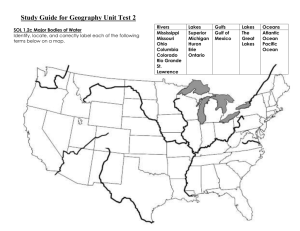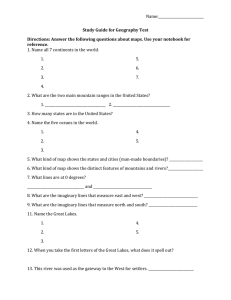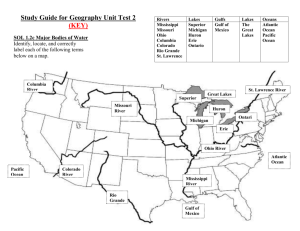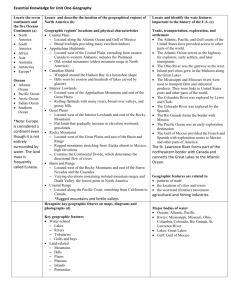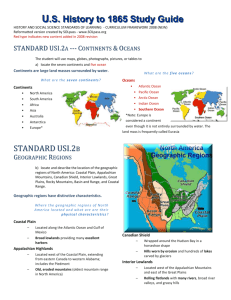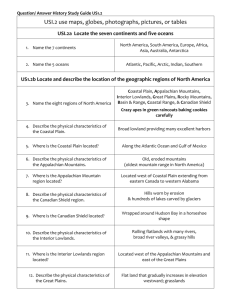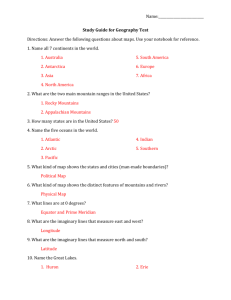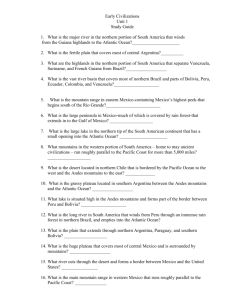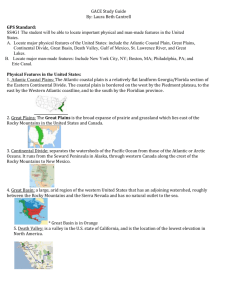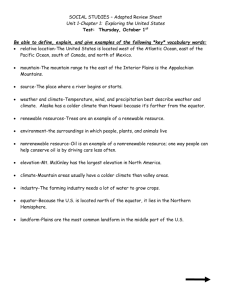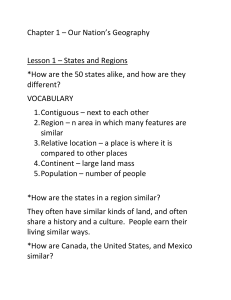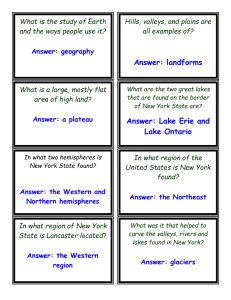the study guide
advertisement
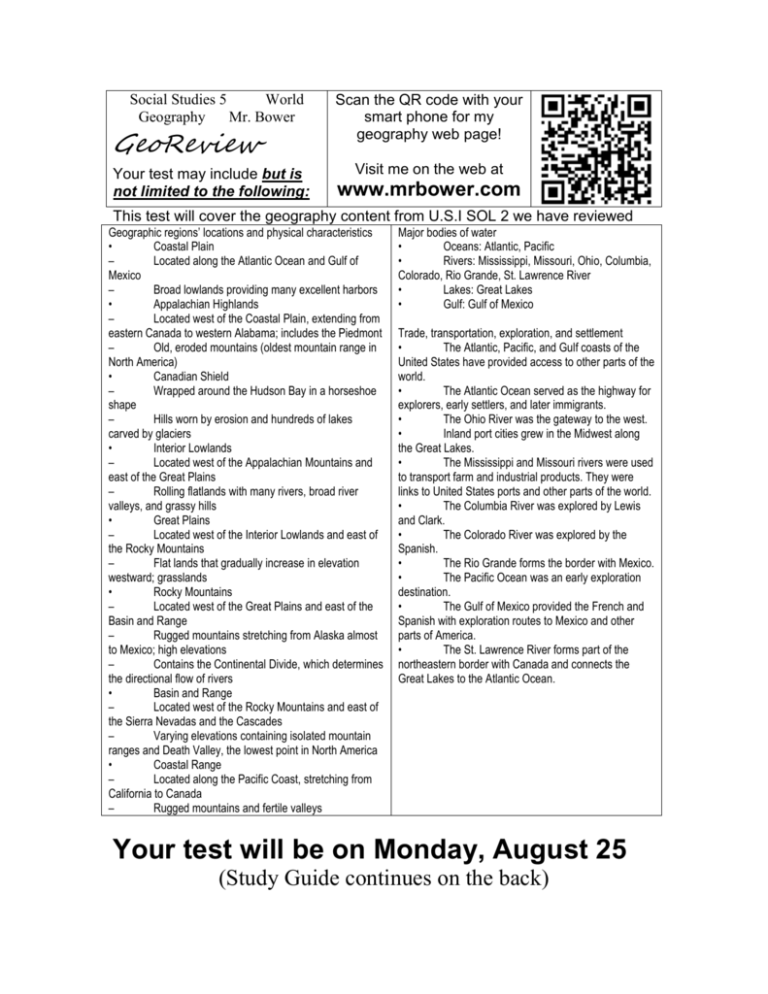
Social Studies 5 World Geography Mr. Bower GeoReview Your test may include but is not limited to the following: Scan the QR code with your smart phone for my geography web page! Visit me on the web at www.mrbower.com This test will cover the geography content from U.S.I SOL 2 we have reviewed Geographic regions’ locations and physical characteristics • Coastal Plain – Located along the Atlantic Ocean and Gulf of Mexico – Broad lowlands providing many excellent harbors • Appalachian Highlands – Located west of the Coastal Plain, extending from eastern Canada to western Alabama; includes the Piedmont – Old, eroded mountains (oldest mountain range in North America) • Canadian Shield – Wrapped around the Hudson Bay in a horseshoe shape – Hills worn by erosion and hundreds of lakes carved by glaciers • Interior Lowlands – Located west of the Appalachian Mountains and east of the Great Plains – Rolling flatlands with many rivers, broad river valleys, and grassy hills • Great Plains – Located west of the Interior Lowlands and east of the Rocky Mountains – Flat lands that gradually increase in elevation westward; grasslands • Rocky Mountains – Located west of the Great Plains and east of the Basin and Range – Rugged mountains stretching from Alaska almost to Mexico; high elevations – Contains the Continental Divide, which determines the directional flow of rivers • Basin and Range – Located west of the Rocky Mountains and east of the Sierra Nevadas and the Cascades – Varying elevations containing isolated mountain ranges and Death Valley, the lowest point in North America • Coastal Range – Located along the Pacific Coast, stretching from California to Canada – Rugged mountains and fertile valleys Major bodies of water • Oceans: Atlantic, Pacific • Rivers: Mississippi, Missouri, Ohio, Columbia, Colorado, Rio Grande, St. Lawrence River • Lakes: Great Lakes • Gulf: Gulf of Mexico Trade, transportation, exploration, and settlement • The Atlantic, Pacific, and Gulf coasts of the United States have provided access to other parts of the world. • The Atlantic Ocean served as the highway for explorers, early settlers, and later immigrants. • The Ohio River was the gateway to the west. • Inland port cities grew in the Midwest along the Great Lakes. • The Mississippi and Missouri rivers were used to transport farm and industrial products. They were links to United States ports and other parts of the world. • The Columbia River was explored by Lewis and Clark. • The Colorado River was explored by the Spanish. • The Rio Grande forms the border with Mexico. • The Pacific Ocean was an early exploration destination. • The Gulf of Mexico provided the French and Spanish with exploration routes to Mexico and other parts of America. • The St. Lawrence River forms part of the northeastern border with Canada and connects the Great Lakes to the Atlantic Ocean. Your test will be on Monday, August 25 (Study Guide continues on the back) Continents • North America • South America • Africa • Asia • Australia • Antarctica • Europe* Key geographic features • Water-related – Lakes – Rivers – Tributaries – Gulfs and bays Oceans • • • • • Atlantic Ocean Pacific Ocean Arctic Ocean Indian Ocean Southern Ocean • – – – – – – *Note: Europe is considered a continent even though it is not entirely surrounded by water. The land mass is frequently called Eurasia. Land-related Mountains Hills Plains Plateaus Islands Peninsulas 1. 2. 3. 4. 5. 6. Coastal Range Basin & Range Rocky Mtns. Great Plains Interior Lowlands Appalachian Highlands 7. Coastal Plain 8. Canadian Shield Know the following: Latitdue Longitude Equator Prime Meridian North Pole South Pole Hemispheres Parrallels Meridans Vocabulary land mass coastal elevation erosion glacier lowlands plain access immigrant industrial inland port port
